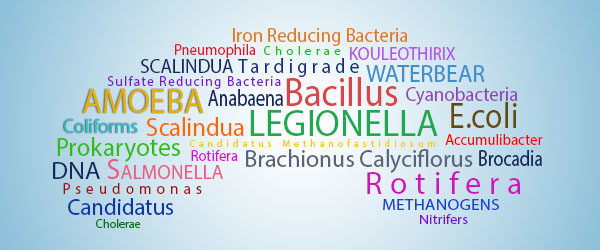There’s no universal method for cataloging organisms or for converting sequencing data to taxonomic data, so careful examination of methodology, as well as the results, is needed when analyzing DNA-associated data. Three of the intricacies are discussed below:
Candidatus
The formal naming of organisms is determined by a set of rules called the International Code of Nomenclature of Prokaryotes. For an organism to be approved and named, there are certain requirements, including cultivation and storage in a culture collection, such as the American Type Culture Collection. Individuals can then obtain a sample of the organism from the culture collection for further study or use. The rise of DNA sequencing has opened up the potential to characterize organisms that are difficult to cultivate and store. The practice that has been developed is to add the provisional status of Candidatus (Latin for candidate) to the organism name.
Within engineered systems, Candidatus organism has been shown to be quite important. For instance, in wastewater treatment systems there are several important phosphorus accumulating (ie. Candidatus Accumulibacter) and annamox (ie. Candidatus Brocadia, Candidatus Scalindua) organisms.
Taxonomic Databases
There are many taxonomic databases which can be used to translate sequencing reads (the string of C, G, A and T nucleotides that is outputted by the sequencing equipment) to a taxonomic tree containing information on the Kingdom, Phylum, Class, Order, Family, and Genus. For 16S sequencing, which is very common for studying bacteria and archaea, commonly used databases including SILVA, RDP and Greengenes.
Each of these databases differs slightly in their composition, including the total number of organisms. DNA sequencing is a rapidly evolving field resulting in frequent updates to databases. This can result in discrepancies and assignment errors when comparing data analyzed with two different taxonomic databases.
JGI 0001001-H03
What organism is JGI 0001001-H03? Often in your results, you will see organisms with meaningless, seemingly random alphanumeric names. These organisms have been identified using sequencing, however, they are not necessarily well characterized. Organisms are often submitted to larger genetic databases such as NCBI (National Center for Biotechnology Information) and assigned informal names. As the organism is further characterized, it is assigned a more formal name. For instance, WSA2, a methanogen, was recently renamed Candidatus Methanofastidiosum after it was further studied and characterized by Nobu et. al. (2016).
LuminUltra has a range of DNA sequencing products and services including a full qPCR workflow ready for your laboratory and a mail-in DNA sequencing service for a range of industries including wastewater treatment, cooling water and industrial process water. Contact us to learn more.









